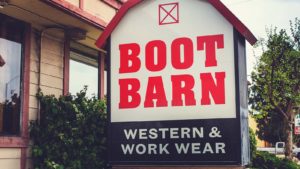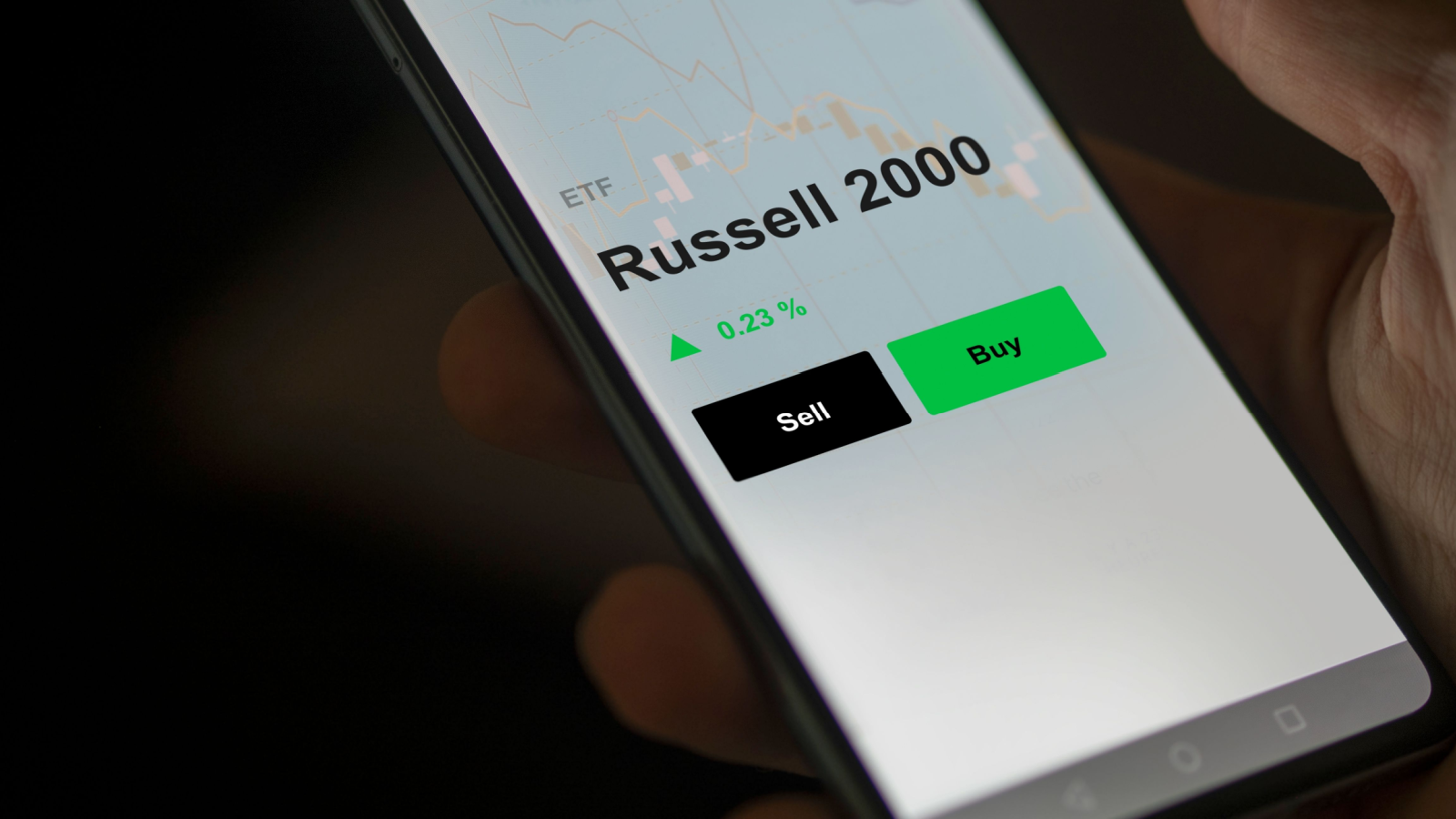Small-cap stocks had been on a dreadful performance streak. The iShares Russell 2000 ETF (NYSEARCA:IWM) had badly lagged the other stock market indexes as investors shunned smaller companies over the past year.
This changed to a major degree in July as small-cap stocks finally caught a bid. With recent jitters in the AI and semiconductor sectors, capital has started to rotate back into smaller firms in other industries.
Not all of these Russell 2000 constituents are worthy of such positive sentiment, however. These seven Russell 2000 stocks to sell are all up at least 50% year-to-date, but the gains aren’t likely to last.
Lumen Technologies (LUMN)

Lumen Technologies (NASDAQ:LUMN) is a telecommunications company that provides broadband and fiber services to a broad range of customers.
The company has been stuck in decline for many years. It has been selling off assets, such as its Latin America business, to raise cash amid persistent organic declines in its customer base and revenues. Simply put, there is a ton of competition in telecom right now, especially in some of Lumen’s more legacy-driven telecom verticals.
However, traders have seemingly thrown all those concerns out the window. LUMN shares have tripled in recent weeks on excitement around several new deals with technology companies. Some people imagine Lumen Technologies will become an AI darling.
But we shouldn’t lose sight of the fact that Lumen has a gargantuan quantity of debt, and its bonds are junk-rated. The company’s latest earnings report was also a mess, with revenues plunging 10.7% year-over-year (YOY). All this makes LUMN stock’s recent rally an absolute gift to sell into.
Sweetgreen (SG)

One effect of the recent consumer spending boom has been the rise of more expensive fast casual dining experiences. Companies like Sweetgreen (NYSE:SG), Cava Group (NYSE:CAVA) and Dutch Bros (NYSE:BROS) have prospered as people spend more on food and beverages.
Specifically, everyone wants to invest in the next Chipotle (NYSE:CMG), and these sorts of smaller restaurant chains look appealing. SG stock, for its part, recently popped on a mixed earnings report.
However, I’m highly skeptical that Sweetgreen will be the next big thing. The company’s menu is rather expensive compared to the amount of calories it provides. This sort of business model works during a strong economy but could turn much less appealing during a recession.
We already saw BROS stock slump recently on weak earnings. As high inflation and a weakening economy weigh on consumer sentiment, look for Sweetgreen to follow suit shortly.
SoundHound AI (SOUN)

Unlike Lumen Technologies, SoundHound AI (NASDAQ:SOUN) has been a leading AI stock for a long time now.
While traders can be forgiven for chasing exciting new AI names, it’s hard to see the appeal of companies like SoundHound AI at this point. Simply put, more than a year into the generative AI boom, SoundHound AI’s operations continue to languish.
The company continues to lose money, and quarterly revenues of less than $14 million aren’t especially encouraging either.
SoundHound AI recently announced a big acquisition, shelling out $80 million for Amelia, a conversational AI tool. Perhaps Amelia can finally jumpstart SoundHound’s growth story. More likely, however, SOUN stock will get lost in the noise as traders move on to more promising AI companies.
Hyliion Holdings (HYLN)

Hyliion Holdings (NYSE:HYLN) is an alternative energy company.
It came public via a SPAC with the goal of commercializing an electric vehicle powertrain technology. Hyliion suggested its powertrain could help clients reduce emissions, cut costs and improve efficiency.
However, Hyliion had no success in trying to develop and sell that technology to clients. So, the company has now pivoted and is aiming to make money with Karno, which it describes as “an additive manufacturing-enabled generator technology that uses heat to drive a sealed electricity-producing linear generator.”
Hyliion hopes to start seeing its Karno investment pay off in 2025. That said, the company generated no revenues whatsoever last quarter, and there is little reason to trust management with its new venture, given how its electric powertrain vision flamed out.
It makes no sense that HYLN stock still has a greater than $345 million market capitalization given this company’s track record to date.
Sprouts Farmers Market (SFM)

Natural and healthier foods-focused grocery store chain Sprouts Farmers Market (NYSE:SFM) is on an incredible run. SFM stock is up more than 150% over the past 12 months.
Give management credit where it is due. The company has executed a successful turnaround and reversed a prior decline in same-store sales. Several investment banks that had been negative on Sprouts have upgraded SFM stock, saying that its same-store sales are “too strong to ignore.”
That’s all well and good, but the pendulum has swung too far in the other direction. Now, Sprouts shares are selling for a shocking 30 times forward earnings. That’s simply an unsustainable multiple for a grocery store chain, given the industry’s low profit margins and heavy competition.
Abercrombie & Fitch (ANF)

Abercrombie & Fitch (NYSE:ANF) has been a huge surprise over the past year, with ANF stock rising nearly 300% over the past 12 months. Traders are excited that shopping malls have pulled out of their slump for the time being. This seems to be putting the cart ahead of the horse, as mall traffic is still slightly below pre-pandemic levels.
Abercrombie & Fitch has bounced back from its pandemic-era struggles. Consumers have been shopping at a healthy rate since the economy reopened, as folks are prioritizing experiences in the form of what’s known as revenge spending.
This has benefitted retail companies, like Abercrombie & Fitch, that have been able to play the consumer trends well. There’s no taking anything away from the success that management has had over the past 18 months.
Nevertheless, the company generated $4.3 billion in revenues in fiscal year 2024. That was up only slightly from the $3.7 billion the company produced way back in 2015. At the same time, ANF stock was trading around $25 back then, and now it’s at about $150.
As such, the vast majority of the move here is from investor optimism rather than improvement in the underlying business. This positive sentiment could be fleeting. When the next recession inevitably hits, ANF stock will end up back on the clearance rack.
Boot Barn (BOOT)

Abercrombie & Fitch isn’t the only retailer that has surged far beyond its fair value. Boot Barn (NYSE:BOOT) is another such case of misplaced investor enthusiasm.
Boot Barn has more than 300 stores which, in addition to boots, sell western wear such as belts, jeans, hats and western-style jewelry. This is a solid niche business that has held up fairly well despite the threats from e-commerce.
However, BOOT stock has now doubled from its 52-week lows. This seems way out of proportion to the company’s results. Specifically, analysts see earnings growing 9% in fiscal year 2025, which isn’t bad but hardly the sort of thing that normally makes a retailer’s stock price double. Meanwhile, the stock is now up to 26 times forward earnings.
Additionally, Boot Barn’s products fall clearly within the discretionary spending category. Any downturn in the economy could cause the company’s earnings growth to sputter out and cause a sharp decline in BOOT’s stock price.
On the date of publication, Ian Bezek did not have (either directly or indirectly) any positions in the securities mentioned in this article. The opinions expressed in this article are those of the writer, subject to the InvestorPlace.com Publishing Guidelines.
On the date of publication, the responsible editor did not have (either directly or indirectly) any positions in the securities mentioned in this article.
